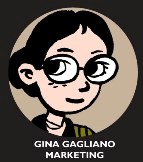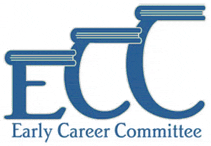
Gina Gagliano, Associate Marketing & Publicity Manager at First Second Books | November 13, 2014

For people who might not be as familiar with the imprint, can you give a brief overview of First Second?
First Second (:01) is Macmillan’s dedicated graphic novel imprint. That means that we have a staff (four people!) who spend all their time editing, designing, and marketing comics.
First Second is the brainchild of Mark Siegel, Simon Boughton, and John Sargent. They wanted to create a publishing imprint to make graphic novels that would reach book market readers — schools, libraries, and bookstores, and all the people who find their books there — as well as the readers who are already reading comics in comic stores. This has been an interesting challenge, because the demographics of people who read comics in comic stores (men in their twenties to forties) don’t really match up with book market readers (everyone). Working from the premise that comics are awesome and that people who enjoy prose books will also enjoy graphic novels, we’ve spent the past eight years publishing comics for kids and women as well as middle-aged men. It turns out that there are indeed comics for just about everyone!
We publish about 20 graphic novels a year for people ages three and up. They are all worth reading.
Can you tell us what your role is at First Second Books?
I do the marketing and publicity for First Second. I’m the only marketing and publicity staff person that First Second has, so that means I have a lot to do! I actually have a talk that I give new First Second authors about all the things that I do; it generally lasts about an hour, so I will spare you all that extended version of my job description.
On a typical day, you’ll find me doing anything from organizing book tours to making promotional materials to running our booth at a convention to booking advertising to running all our social media to pitching cover reveals to managing the :01 marketing budget. Luckily, the kind folks at our parent company, MacKids, give me a hand with some of this stuff so I’m not working round the clock.
One of the things I like best about First Second is that because we’re so small, everyone who works at our imprint has a voice in what books we publish and how we publish them. That means I get to vote about whether covers have spot gloss and who we should ask for blurbs as well as spending my time dealing with our Canadian and UK distributors.
What piqued your interest in graphic novels? Have you always been a comic book reader?
I didn’t grow up reading graphic novels at all. I read voraciously — and omnivorously — when I was a kid, but my local bookstore and library didn’t carry graphic novels, so I had zero exposure to them. Usefully, my college managed to correct this by having a library filled exclusively with academic texts and a student-run comics reading room that had been around (and collecting comics) since the sixties. After running out of books to read for pleasure at the college library, I ended up discovering the comics reading room — and then running it for two years. I’m a big fan of illustrated books in general; I think that words and pictures are a wonderful combination that enhances how wonderful storytelling can be. And comics are such a great way to put words and pictures together!
After I graduated from college, I went back to the bookstore and the library in the town I grew up in, and worked with both of them to develop a graphic novel section. It turns out that the first step to getting more acceptance for graphic novels is having them around so people can read them and discover for themselves how good they can be!
What was your first publishing job/how did you get to where you are today? Did you start in a different area and then make your way to graphic novels?
Before I started working at First Second, I had two publishing internships. The first one was at a small press in LA called Red Hen Press. I showed up there the first day of summer and they said, ‘Here’s a manuscript — can you edit, design, and market this? It’s supposed to come out in August.’ To say I was a bit surprised would be an understatement, and I ended up having to learn how to use PageMaker, which I had never even heard of before (and have never used since). My next internship was with Dark Horse Comics, which publishes Hellboy, Sin City, Usagi Yojimbo, and lots of other great comics. I worked in their editorial department, which meant that I was responsible for everything from erasing pencil lines on inked finished art to rewriting scripts by celebrity authors.
After graduating from college, I came to New York because I wanted to work in publishing. In my campaign of endeavoring to become employed, I went to a literary festival that’s no longer in existence, Bryant Park’s Great Reads in the Park. While I was there, I met John Sterling, who was at that point the publisher of Henry Holt. I pestered him into taking a copy of my resume, and he handed it on to Mark Siegel, the editorial director of First Second, which had just been announced. And I’ve been here ever since!
What are the major differences you’ve noticed between publicizing/marketing a graphic novel vs. a novel?
When you’re publishing a graphic novel rather than a novel or a picture book, a lot is the same and a lot is different.
You still need marketing and publicity; blurbs are still helpful (who doesn’t love starred reviews and awards?); authors who are actively doing events, school visits and using social media never hurts; and graphic novels that are exceptionally well written and exceptionally well drawn are always eagerly embraced by people who love books.
The biggest difference we see at First Second is that there are some people in our country who still don’t read comics at all, except maybe in the morning paper (and sometimes not even then). Because a lot of people in the US didn’t read comics growing up, they’re not comfortable with reading comics as adults — or giving them to their kids, buying them for their schools, libraries, or bookstores, if they happened to have grown up to be teachers, librarians or booksellers. So it can still be a real struggle to get a fantastic graphic novel to be as broadly acclaimed as an equivalently fantastic prose novel or picture book. Luckily, with the help of some exceedingly popular and award-winning graphic novels like Gene Luen Yang’s American Born Chinese and Raina Telgemeier’s Smile, this state of things is changing.
On the other hand, graphic novels have the advantage of getting people to fall in love with them just from looking at a page or two of the artwork!
How important are comic conventions, trade shows, and festivals to marketing your books? What goes into planning First Second’s presence at these events? How does it differ from other book publishers?
One of the major ways that graphic novel marketing and book marketing are different is that graphic novels have a circuit of conventions every year just like romance books and science fiction/fantasy books do. So that means every year, First Second exhibits at the MoCCA Art Festival, the Toronto Comics Art Festival, the Maine Comics Art Festival, San Diego Comic-Con, New York Comic-Con, and Comics Arts Brooklyn. There are around ten other annual comics-specific shows that our authors exhibit at and sell their own books at, and we work with those shows to get our authors featured on programming, doing the poster art, and recognized as featured guests. We also work with the typical book conventions and festivals (BEA, ALA, LA Times, Miami, Texas, the National Book Festival, Litquake, etc.) That means that depending on timing and author location, we may have more opportunities to promote our authors and our graphic novels than are available for the typical prose novel or picture book — and to a group of people who wouldn’t necessarily be the audience for a typical prose novel or picture book.
Everything that a book publisher does at a consumer show like SDCC or NYCC, First Second also does: exhibiting, selling books, hosting signings, having give-aways, organizing programs, etc. Sometimes, the fact that these conventions are centered around comics and pop culture gives us the opportunity to be involved in additional educational programming, receive awards (sorry, prose publishers — only comics can get an Eisner!), and have additional special guests.
I think that the biggest difference between :01 and a book publisher at a show like SDCC or NYCC is that for graphic novel authors, attending, exhibiting, and speaking at shows is part of the culture of making comics. Smaller shows like the MoCCA Festival, the Small Press Expo, the Toronto Comics Art Festival, and others, are how emerging and established cartoonists make money, meet readers, and interact with the industry. Just about everyone we work with has been promoting themselves at conventions for years before we ever publish their first book; a lot of them will just show up at a show like San Diego because that’s what everyone in the comics industry is doing that week. We had eight authors at San Diego Comic-Con this year, and seven of them got there on their own. And we had 11 authors at NYCC this past weekend — nine of them got there themselves. That can make our shows somewhat crazy!
What are some of your favorite memories from conventions?
First Second publishes great books. If you’ve never read anything that we’ve published, you’ll have to take my word for that — but I don’t have to, because people come up to us during conventions to tell us how much they like our graphic novels and our publishing program. It’s fantastic — and very self-affirming — to hear that directly from readers, especially since as publishers, we spend a lot of time making books and not necessarily interacting directly with the people who read them. Conventions like San Diego Comic-Con and New York Comic-Con are a chance for 150,000 of those people to stop by and tell us that they’re affected by our books — which means we’re doing our jobs correctly!
How can that not be the best part? (Zita the Spacegirl cosplay is also awesome, though.)
And, just for fun, what are you currently reading?
I’m in the middle of reading Michael Pollan’s The Botany of Desire. Two years ago, we published a graphic novel by Lucy Knisley called Relish: My Life in the Kitchen. It’s pretty awesome — it’s a memoir of her life told through her important food experiences. In the process of marketing that book, I realized that there were other non-cookbook prose books about food, and I have commenced reading them. Michael Pollan writes wonderful food non-fiction.
And I just finished reading John Allison’s The Case of the Good Boy. John is hilarious, and this book has a yeti who is accidentally in England ! It’s just about the best thing.







